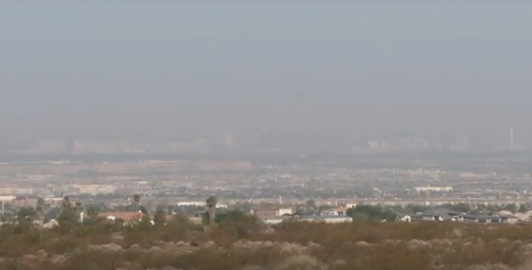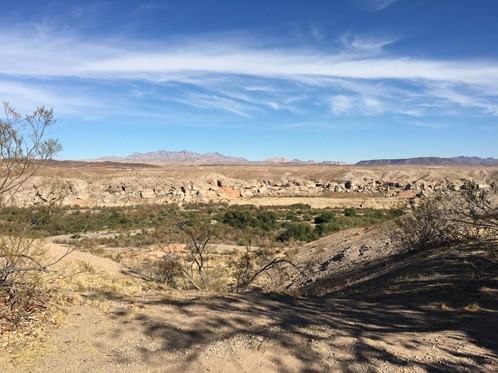By Bobbie A. Hickman
Climate change is exasperating weather patterns causing: rising temperatures, lack of water availability and severely dry conditions. College of Southern Nevada professors weigh in on the State’s future as Nevada Climate Initiative work towards sustainability.
In March 2019 Governor Steve Sisolak signed an executive order establishing Nevada Climate Initiative to address issues climate change pose on the Nevada.
According to NCI’s website, “The State of Nevada Climate Initiative is dedicated to achieving resilient communities that are prepared to successfully adapt to changing environmental and climate conditions.” Nevada Climate Initiative is accelerating the push needed for a sustainable future amidst global warming.
The United States Environmental Protection Agency states that carbon dioxide in the air has increased by 40% due to human activities. Other heat-trapping greenhouse gases are increasing and have warmed the surface in the lower atmosphere of our planet about 1 degree Fahrenheit during the last 50 years.
Irregular wind and ocean surface temperatures cause El Niño and La Niña to occur. These episodes directly affect western United States’ weather conditions. According to National Integrated Drought Information System, run by the U.S. Government, “El Niño and the Southern Oscillation is a periodic fluctuation– every two-to-seven years– that affect sea surface temperature and the air pressure of the overlying atmosphere across the equatorial Pacific Ocean.”
Dr. Melissa Giovanni, a physical science professor at CSN, says, “We are actually in the opposite of an El Niño right now. It’s called a La Niña when temperatures in the equatorial Pacific are a little cooler than average and that leads to drier conditions in the Southwest in the United States.” The combination of naturally dry weather and unnatural global warming concerns professionals in environmental science.
“We need to get to zero as soon as possible,” says Director Dr. Kristen Averyt, coordinator of NCI. “The decisions we make today about greenhouse gas emissions will essentially define what the future looks like for our children and our grandchildren in terms of impact from climate change. We are going to look at a future of not just drought but really bad drought and we can avoid that if we start to reduce our emissions now.”
NCI set goals to reduce greenhouse gas emissions by 28% in 2025 and 45% in 2030 with net-zero emissions by 2050. Reducing the amount of greenhouse gases released in our atmosphere will prevent further global warming.
According to a December 2019 report done by the Nevada Division of Environmental Protection on Nevada’s greenhouse gases emissions, Nevada is approximately 4% off pace with the goal set to reduce these emissions by 2025 and short 19% for the 2030 goal.
“If you look at Southern Nevada’s temperature data since the 1980s, summers are becoming much warmer and are lasting longer, which is causing other effects like the drought we are experiencing,” said John Keller, a professor in environmental science at CSN. “If you look at the temperature data from the Industrial Revolution—the start of humans burning fossil fuels and producing greenhouse gases in mass quantities—the trend is upwards and the slope of the increase in becoming steeper over the last four decades.”
The State has warmed about 2 degrees Fahrenheit in the last century, according to the EPA.
Averyt says, “What happens when you warm the atmosphere is it can hold more water. When it’s dry outside you are going to actually suck more moisture out of the soil and when it’s ready to rain there is more water in the clouds to precipitate out. This is one reason why in Northern Nevada we predict more droughts and more floods but roughly the same amount of water coming on average over a period of time.”
Southern Nevada makes up over half of the State’s water needs. Water demand is expected to increase 85% by the year 2065, according to EPA.
The main source of water is supplied by the snowmelt from the Rocky Mountains, which has been declining due to drought conditions since 2000. The snowpack in Colorado affects Nevada’s water supply the most. Over the past 50 years, snowpack melted earlier each year, according to National Oceanic and Atmospheric Administration, from the U.S. Government.
“The precipitation we receive here in the greater Las Vegas area can only support about a quarter of our population,” says Paula Jacoby-Garrett, who teaches environmental science at CSN. “The remaining water we use has traveled approximately 1,000 miles from the Rocky Mountains down the Colorado River to Lake Mead.”
According to Jacoby-Garrett, this water is shared among seven states and Mexico based on an agreement from 1922. The snowmelt and precipitation in Colorado and Wyoming affect water availability of the Colorado River.
Higher temperatures and drier conditions are likely to increase severely, frequently and prolong wildfires in Nevada. According to the EPA, an average 5% of the State’s land has burned per decade since 1984. Nevada is already the driest state in the U.S. with an average annual precipitation rate at 9.5 inches.
Planning for the years to come will need to involve younger generations. When asked how students should get involved Averyt says, “I value student voices because people like me are in positions that are going to be making decisions that are going to impact all of you so you need to be at the table and you need to be engaged.”
Opportunities to get involved with improving the climate resilience future can be found on https://climateaction.nv.gov.





